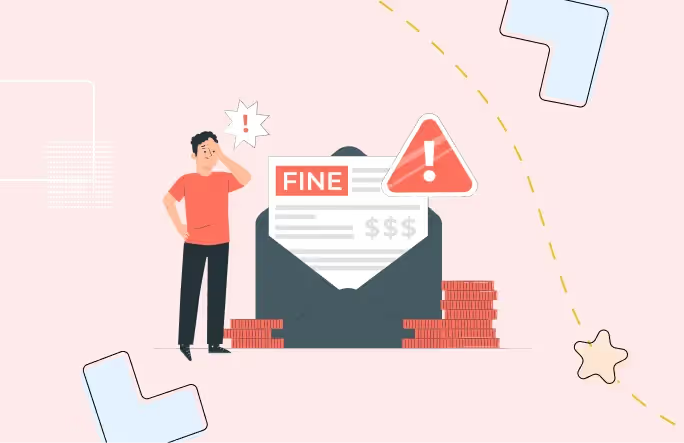Are you misclassifying your employees? If so, you can face lawsuits, thousands of dollars in fines per employee, and jail time if found guilty. For example, Lyft had to pay $27 million to settle its misclassification lawsuit. Also, as a part of the settlement, Lyft had to change its terms of service so that they were compliant with the California law for independent contractors.
In this article, we’ll take you through the penalties for misclassifying employees as independent contractors.
What's employee misclassification?
Employee misclassification occurs when an employer inaccurately labels a worker as an independent contractor, despite legal criteria that classify them as an employee. This issue is widespread, with the Economic Policy Institute reporting that 30 percent of employers in the United States have misclassified at least one employee.
For employers, especially those who are navigating the complexities of remote hiring, understanding employee misclassification is crucial. This blog post serves as an essential guide, offering detailed insights into the penalties and fines associated with independent contractor misclassification, along with information on the IRS tests that help determine a worker's correct classification.
What’s the difference between contractors and employees?
The key distinctions between an employee and a contractor can be summarized through their employment relationship, tax responsibilities, and the benefits and obligations provided by the employer.
1. Employment Relationship
Employees enjoy a formal employment relationship with an organization, meaning they are officially part of the company and work under its supervision. In contrast, contractors are engaged through contractual agreements, operating independently and not being part of the company's internal workforce.
2. Taxes
When it comes to taxes, employees are placed on the organization's payroll, with their taxes being deducted directly from their pay as per contractual agreements. This system ensures that employees’ tax obligations are managed by their employer. Conversely, contractors function as independent workers, responsible for their own self-employment taxes. This independence from the organization's payroll system highlights the contractor's autonomy in managing tax obligations.
3. Benefits and Obligations
The legal framework mandates that employers provide certain benefits to their employees, such as health insurance, retirement plans, and paid time-offs. These benefits are part of the employer’s obligations towards their employees. Contractors, on the other hand, do not receive such benefits through their contracts. They are responsible for arranging their own benefits, which aligns with their status as independent entities not entitled to employee benefits.
Why Employee Misclassification Occurs?
1. Intentional Misclassification
Incorrectly classifying an employee as an independent contractor is common and can have serious consequences. Here are some examples of employee misclassification:
- An employer hires a worker to perform a job integral to the company's operations. Yet, they classify the employee as an independent contractor. They might do so to avoid paying employment taxes and benefits.
- A company hires a worker to perform a job full-time. But classifies the worker as an independent contractor. They can do so to avoid paying full-time employee benefits like overtime.
- An employer hires a worker to perform a job that requires the worker to be on-site during specific hours. But, the employer classifies the worker as an independent contractor to avoid paying for worker's compensation insurance.
2. Misclassification by Mistake
Employee misclassification can occur by mistake as well. This can happen:
- When the employer is not familiar with the legal requirements for worker classification.
- When there is confusion about the worker's role.
If an employer discovers they have misclassified workers, they must correct the mistake. They can do so by making the employee and the government whole. This means they must pay back taxes, benefits contributions, pension contributions, and fines.
The IRS Right-to-Control Test
In the US, the IRS used a 20-factor test for worker classification, but it is no longer in use. The 20-factor test evaluated the right to control and the validity of independent contractor classifications. However, the IRS found this test too complicated and difficult to apply consistently. It revealed a new way of classifying workers in their Employer's Supplemental Tax Guide (2020) using the three-pronged test that compressed the 20 factors into 3 categories.
It aims to determine whether a worker is an employee or an independent contractor. The three prongs of the test are:
1. Behavioral Control
This prong looks at how much control the business has over the work being done and how it is being done. Factors that are considered include:
- instructions given to the worker
- training provided by the business
- evaluation systems used by the business
2. Financial Control
This prong looks at the financial aspects of the worker's job. It looks into different factors like:
- if the worker has invested in tools and equipment significantly to perform the job.
- whether the worker is reimbursed for expenses.
- whether the worker can make a profit or loss.
3. Type of Relationship
This prong looks at the relationship between the worker and the business. Factors considered include:
- whether the worker is entitled to benefits
- is provided with a workspace
- is free to work for other businesses
Read more: Employee and Independent Contractor misclassification
Penalties for Misclassifying Employees as Independent Contractors
Employee misclassification can attract substantial independent contractor misclassification penalties for employers. These include legal and financial penalties, jail, or class action lawsuits. The nature of penalties depends on the country the employer and the employee are based in.
For example, in the US, IRS can levy heavy IRS penalties for misclassification of independent contractors. In California law, the penalty amount can be anywhere from $5000 to $15000 for violation. If there's a pattern of wilful violation, the amount can reach $10,000 to $25,000. And it's not just IRS penalties. Employers can be subjected to penalties by the federal authorities as well.
Similarly, Singapore’s Ministry of Manpower (MOM) takes a serious stand on misclassification. It mentions any employer who practices misclassification will be fined/jailed under the Central Provident Fund Act 1953. The independent contractor misclassification penalties can go up to SGD 5,000 if the employer is found to not comply with the tax filing/clearance obligations.
Misclassification of employees can get messier in the UK where the law is complex. For example, misclassification risk by HM Revenue and Customs (HMRC) mentions penalty amount can be 100% of the amount due where the employer is liable for lack of withholding tax.
1. IRS Penalties for Misclassification of Independent Contractors in the US
When you hire an employee in the US, you must pay a part of their income to FICA, Medicare, and social security taxes. But suppose you have misclassified the employee as a contractor to avoid these taxes. If there's an IRS audit and it finds the misclassification of the employee, you're subjected to IRS penalties for misclassification of independent contractors.
In the US, different states have different laws regarding the penalty amount.
For example, in Virginia law, you will be imposed a civil penalty of up to $1,000 per misclassified individual in the first audit, up to $2,500 per misclassified individual in the second audit, and up to $5,000 per misclassified individual in subsequent audits.
While Texas law mentions misclassifying a worker can attract a fine of $200 per worker if the employer operates under a government contract.
2. Federal Authorities' Independent Contractor Misclassification Penalties
In the US, besides the IRS penalties, employers may face federal authorities’ penalties for misclassifying employees and violating an employee's federal protection. Federal protection safeguards employees' right to employment benefits like minimum wage requirements, overtime benefits, etc. The Department of Labor audits employees for misclassification. If found guilty, the consequences can be:
- Jail time for up to a year
- Up to $1,000 fine for each employee misclassified
- Class action lawsuits
Countries outside the US, too, have similar penalties for misclassifying employees as independent contractors. For example, companies in Australia might have to pay a fine of $82,500 per employee misclassified.
Apart from IRS penalties for misclassification of independent contractors, there can be other consequences for the misclassification of employees. Some of these include:
3. Regulatory Fines in the US
Apart from IRS penalties for misclassification of independent contractors in the US, there can be regulatory fines. This can be in the form of repayment of benefits, pension, health insurance, severance pay, and paid leaves.
Why is it important to avoid employee misclassification?
Legal Disputes
Apart from fines, there can be legal risks, like stopping work orders for business in the state or country of operations, plus a ban on doing business altogether.
Damaged Reputation
Misclassification can damage your company's reputation. This can impact your relationship with customers, prospects, and employees. It can also create a negative brand image. And if there's any high-profile misclassification like a leadership role, employees might want to leave the company.
Loss of Intellectual Property
Apart from fines and lawsuits, there can be other consequences. For example, suppose an employee works remotely from another country and is misclassified by the employer. The question remains: Who owns the intellectual property (IP) right of the work produced? Losing your IP can cause you harm in many ways, including lawsuits and hefty fines.
How to avoid employee misclassification risk?
Employee misclassification can bring serious consequences. These can be independent contractor misclassification penalties, lawsuits, and the risk of damaging the brand image. However, you can avoid all these consequences by partnering with an employee of record (EOR) like Gloroots.
Gloroots help companies hire remotely. It does all the regulatory compliance heavy lifting so that you can focus on the day-to-day with complete peace of mind. We also maintain transparency with regard to how compliance requirements are being met. Further, Gloroots ensures faster onboarding and multi-currency payments as well.
Book a call to learn more about our EOR services!

.webp)




























.webp)

























.webp)


.webp)


.webp)












